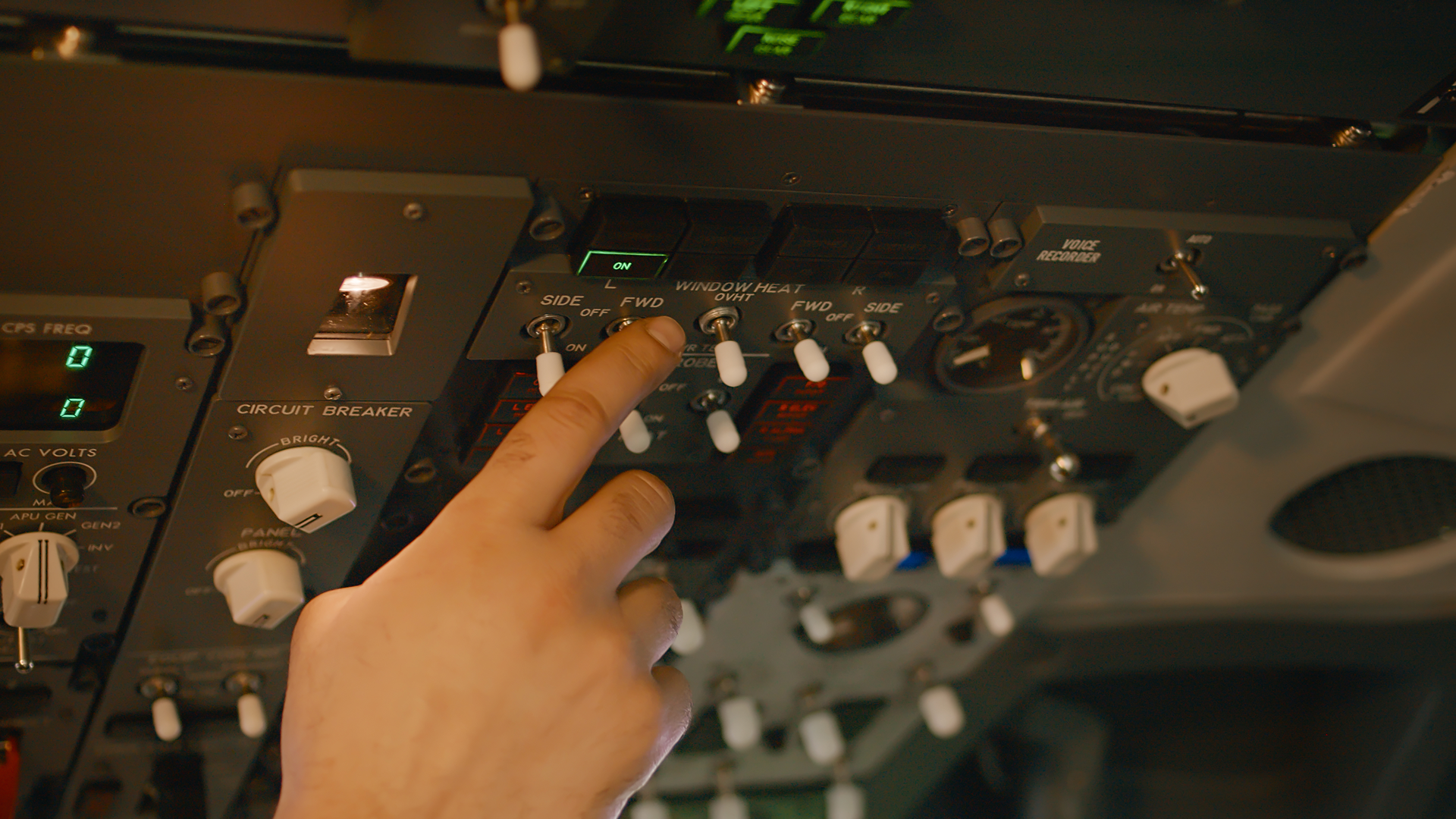
Aircraft parts don't always fail on schedule. Sometimes, they give you warning signs long before they break. Components like hydraulic pumps might show pressure fluctuations, bearings often emit unusual vibrations, and electronic systems frequently display performance anomalies weeks or even months before critical failure. Why rely on fixed intervals when you can act on real-time data instead?
Condition-based maintenance puts you in control by letting you service only when your equipment actually needs it.
In aviation, this approach means safer flights with reduced risk of in-flight component failures, fewer surprises that cause costly AOG situations, and smarter use of every maintenance dollar through elimination of unnecessary parts replacements and labor hours.

Condition-based maintenance (CBM) is a proactive maintenance approach that schedules service tasks only when actual equipment condition data indicates a need. Unlike traditional time-based methods, maintenance based on condition relies on real-time monitoring to determine when intervention is truly necessary.
CBM uses equipment performance and health indicators to drive maintenance decisions. This approach is particularly valuable in aviation, where unexpected failures can have serious safety and financial consequences.
In a condition-based maintenance system, you monitor components such as engines, landing gear, and hydraulic systems for signs of wear, abnormal vibration, or temperature changes. This condition-based monitoring allows you to act only when data shows a genuine need.
CBM Key Benefits at a Glance
Not all proactive maintenance strategies are created equal. This section compares condition-based maintenance to both time-based and predictive approaches, showing how CBM balances efficiency and accuracy in real-world aviation settings.
Time-based maintenance follows fixed intervals regardless of actual component condition. You replace parts after predetermined flight hours or calendar days, which can lead to replacing perfectly good components or missing early degradation.
With CBM in maintenance, you rely on real evidence from sensors or aircraft inspections. You only service components when performance data indicates a need, avoiding unnecessary work while still ensuring safety.
Real-world example: Instead of replacing hydraulic filters every 500 flight hours, condition-based maintenance lets you monitor pressure differential and replace filters only when measurements show restricted flow.
Predictive maintenance vs. condition-based maintenance reveals important distinctions in approach. While both are proactive, they differ in methodology and complexity.
Predictive maintenance uses historical data and advanced analytics to forecast future failures. It attempts to predict when issues might occur before any symptoms appear.
Condition-based maintenance responds to current performance indicators and actual component status. It's more accessible for most operators since it requires less complex modeling and can work with existing sensor systems.
See how operators like JASFly, MAS Air, and Aruba Airlines use SOMA Software to implement smarter maintenance workflows and reduce downtime.
Explore CBM Success Stories

Condition-based maintenance delivers measurable advantages for aviation teams by tying service directly to real equipment health—improving safety, compliance, and cost control. A recent study highlights how real-time condition monitoring helps airlines prevent unscheduled maintenance, optimize schedules, and strengthen safety margins.
From usage-based scheduling to real-time task alerts, SOMA Software gives you the tools to build a reliable CBM program across your fleet.
See Our Maintenance Management Solution

Condition-based monitoring techniques form the foundation of an effective CBM program. These methods provide the data needed to make informed maintenance decisions by capturing early indicators of component degradation before failure occurs.
This method detects imbalances, misalignments, or bearing wear in rotating equipment by analyzing vibration frequencies and amplitudes. It is especially valuable for engines, APUs, and pumps, where even minor anomalies can escalate quickly.
By studying lubricants, oil analysis reveals the internal health of components like gearboxes, engines, and hydraulic systems. It identifies issues such as metal wear, chemical breakdown, or contamination.
Infrared cameras detect abnormal heat signatures that may indicate electrical resistance, fluid restrictions, or mechanical stress.
This technique identifies high-frequency sounds produced by leaks, friction, or material defects. It’s highly sensitive and can spot problems well before other methods.
Modern digital monitoring systems track dozens of parameters, from fuel flow to exhaust gas temperature (EGT), to evaluate system health against established baselines.

Implementing CBM is a structured process that spans planning, integration, and continuous improvement. This section outlines the five key stages of CBM implementation and how aviation teams can execute each one effectively.
Effective CBM begins with thoughtful planning. Operators should identify where CBM will bring the most value, set clear goals, and decide how success will be measured before adding new tools or workflows.
Once the scope is set, the focus shifts to equipping aircraft with monitoring technology and connecting those systems with maintenance workflows. Integration is key to ensuring data actually drives action.
Monitoring is the heart of CBM. It’s where operators move from collecting raw information to spotting early signs of wear or failure. Consistent tracking helps prevent minor issues from becoming costly disruptions.
Pro Tip: Combine multiple monitoring techniques for critical systems. For engines, pairing vibration analysis with oil sampling and performance data creates a more complete picture of health than any single method on its own.
Analysis closes the loop between monitoring and decision-making. By reviewing each CBM-triggered maintenance action, operators can learn which interventions were effective and how to improve thresholds.
The final step ensures CBM becomes part of the organization’s culture. Standardized processes, staff training, and compliance integration allow CBM to scale across the fleet while remaining audit-ready.
SOMA Software helps aviation teams transition from reactive to condition-based strategies with integrated task tracking, alerts, and compliance tools. Get a quote today and experience the SOMA difference.
Condition-based maintenance helps you reduce unnecessary servicing, extend component life, and improve operational reliability. By implementing the right CBM software and monitoring techniques, you can transform your maintenance approach from reactive to proactive.
SOMA Software supports aviation maintenance teams with tools specifically designed for condition-based programs. Our platform provides real-time alerts, integrated task management, and comprehensive documentation that keeps you audit-ready.
The benefits of condition-based maintenance are clear: fewer disruptions, better resource utilization, and improved safety. SOMA helps airlines keep their aircraft flying by providing the visibility and control needed to implement effective condition-based strategies.
Ready to optimize your maintenance program with condition-based approaches? Get a Quote and discover how SOMA Software can help you implement CBM across your fleet.